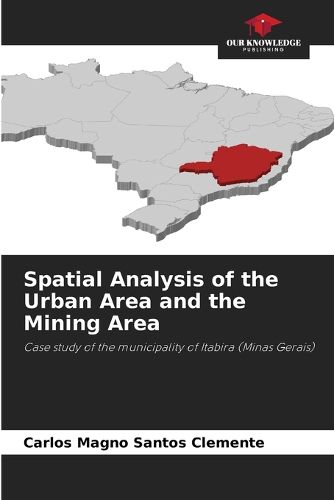Readings Newsletter
Become a Readings Member to make your shopping experience even easier.
Sign in or sign up for free!
You’re not far away from qualifying for FREE standard shipping within Australia
You’ve qualified for FREE standard shipping within Australia
The cart is loading…






Open-pit mining has a considerable impact on socio-spatial configuration. In Brazil, concerns about the impacts of mining on the environment and spatial modification began in the 1990s. In this context, this research aimed to analyze the evolution of the mining area and the urban sprawl in the municipality of Itabira over 22 years (1985, 1997 and 2007). To this end, the research was supported by geotechnological tools, which streamlined data processing, the organization of the alphanumeric database and representation in maps, graphs and histograms. The results showed that in all the years analyzed, the mining area exceeded the urban area. It is noticeable that mining is being directed closer to the built-up area, becoming an attribute that contributes to the increase in socio-spatial conflicts. We also observed the degradation of the drainage network in areas of ore tailings deposits, which surround the mining area and the urban area. As a result, this book draws attention to the environmental degradation caused by mining and the intensification of socio-spatial conflicts in the municipality of Itabira.
$9.00 standard shipping within Australia
FREE standard shipping within Australia for orders over $100.00
Express & International shipping calculated at checkout
Stock availability can be subject to change without notice. We recommend calling the shop or contacting our online team to check availability of low stock items. Please see our Shopping Online page for more details.
Open-pit mining has a considerable impact on socio-spatial configuration. In Brazil, concerns about the impacts of mining on the environment and spatial modification began in the 1990s. In this context, this research aimed to analyze the evolution of the mining area and the urban sprawl in the municipality of Itabira over 22 years (1985, 1997 and 2007). To this end, the research was supported by geotechnological tools, which streamlined data processing, the organization of the alphanumeric database and representation in maps, graphs and histograms. The results showed that in all the years analyzed, the mining area exceeded the urban area. It is noticeable that mining is being directed closer to the built-up area, becoming an attribute that contributes to the increase in socio-spatial conflicts. We also observed the degradation of the drainage network in areas of ore tailings deposits, which surround the mining area and the urban area. As a result, this book draws attention to the environmental degradation caused by mining and the intensification of socio-spatial conflicts in the municipality of Itabira.